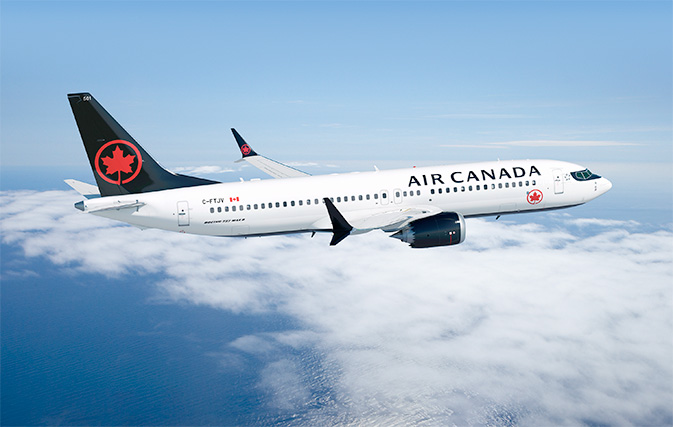MONTREAL – Air Canada achieved its fifth consecutive year of record EBITDAR in 2017, attributing its success to global expansion, a record 48 million customers and the hard work of 30,000 employees.
Last year’s EBITDAR (earnings before interest, taxes, depreciation, amortization, impairment and aircraft rent) reached $2.921 billion compared to the previous record full year 2016 EBITDAR of $2.768 billion, an increase of $153 million. Operating income in 2017 was $1.364 billion compared to $1.345 billion in 2016.
Adjusted pre-tax income amounted to $1.158 billion in 2017 compared to $1.148 billion in 2016, while on a GAAP basis, the airline reported record income before income taxes of $1.279 billion last year compared to $877 million in 2016.
“Our strong 2017 results underscore the effectiveness of our transformation strategy, as well as the success of our global expansion and the power of our comprehensive network. We profitably expanded our global network with 30 new routes launched, and carried a record 48 million customers while maintaining our focus on cost discipline and continuing to improve margins,” said Calin Rovinescu, President and Chief Executive Officer. “Our achievements were driven by the hard work and commitment of our 30,000 employees and I commend them for enthusiastically embracing positive change at Air Canada.”
Rovinescu also noted that in 2017, passenger revenue climbed 10% to a record $14.5 billion, and its unrestricted liquidity amounted to $4.2 billion at year-end.
“Our transformation has made Air Canada profitable while reducing risk in many areas, such as level of indebtedness and pension obligations, the twin pillars of long-term sustainability.”
Air Canada, he added, has undertaken a new Cost Transformation Program to secure an additional $250 million in savings by the end of 2019. This year, its wide-body fleet renewal will be completed, while its mainline narrow-body replacement program accelerates.
Full year income statement highlights are as follows:
In 2017, on capacity growth of 11.6%, record system passenger revenues of $14.471 billion increased $1.323 billion, or 10.1%, from 2016. This was driven by traffic growth of 11.3%, partly offset by a yield decline of 1.0%.
In the business cabin, system passenger revenues increased $334 million, or 13.4%, from 2016 on traffic and yield growth of 9.8% and 3.3%, respectively.
In 2017, operating expenses of $14.888 billion increased $1.556 billion, or 12%, from 2016, mainly driven by the increase in capacity and higher fuel prices year-over-year.
Air Canada’s cost per available seat mile (CASM) increased 0.1% from 2016. Its adjusted CASM decreased 3.0% from 2016, in line with the 3.0 to 4.0% decrease projected in Air Canada’s Oct. 25 news release.
Air Canada recorded adjusted net income of $1.142 billion, or $4.11 per diluted share in 2017 compared to adjusted net income of $1.147 billion or $4.06 per diluted share in 2016.
Current outlook are as follows:
Air Canada expects positive free cash flow in the range of $250 to $500 million in 2018, and is not planning any sale-leaseback transactions this year.
For the first quarter of 2018, Air Canada expects adjusted CASM to increase 2.0 to 3.0% when compared to Q1 2017.
For the full year 2018, Air Canada expects adjusted CASM to range between a decrease of 0.5% to an increase of 1.5% compared to the full year 2017. Approximately 0.75 percentage points of this range are driven by non-recurring costs for branding and new uniforms, customer service and technology investments, accelerated depreciation for Embraer 190 aircraft, and start-up costs of approximately $10 million related to its new loyalty program, scheduled to launch in 2020.

